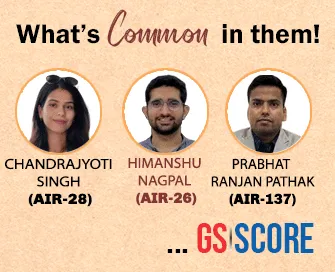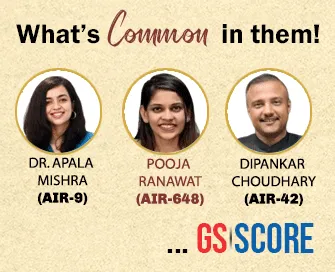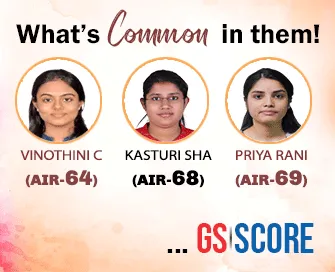

16th July 2025 (13 Topics)
Mains Issues
Context:
The Prime Minister expressed condolences a tragic road accident occurred in Pithoragarh district of Uttarakhand, leading to multiple fatalities and injuries.
India’s Alarming Road Safety Statistics
- India records the highest number of road accident deaths globally.
In 2023, India reported:- 4.80 lakh road accidents
- 1.72 lakh fatalities (a 2.6% increase from 2022)
- Road fatality rate: 250 per 10,000 km of road (higher than China, USA, and Australia)
- Daily average:
- 1,317 crashes and 474 deaths
- That translates to 55 crashes and 20 deaths every hour
- Crash Severity (fatalities per 100 crashes):
- Marginal decline: 36.5 (2022) ? 36.0 (2023)
Key Causes Behind High Road Accidents
- Human Behavior
- Over-speeding caused 68.1% of deaths in 2023
- Reckless driving, distracted driving, drunk driving, and rule violations (helmet/seatbelt neglect)
- Poor Infrastructure
- Roads with poor lighting, potholes, absence of pedestrian facilities, faulty traffic designs
- Lack of safe pedestrian crossings, speed-calming measures, and functional underpasses
- Lack of Real-Time Crash Monitoring
- No national-level crash database
- Inadequate data quality undermines policymaking, accident analysis, and local interventions
- Vehicle Deficiencies
- Many vehicles lack standard safety equipment such as airbags or ABS
- As per Global NCAP (2014), India’s top-selling cars failed UN frontal crash tests
- Low Awareness and Weak Enforcement
- Low public awareness on road safety and safe driving practices
- Inadequate enforcement of existing laws, particularly in semi-urban and rural areas
Government Road Safety Initiatives
- Policy and Legislative Measures
- National Road Safety Policy (NRSP), 2010: Based on S. Sundar Committee
- Motor Vehicles (Amendment) Act, 2019:
- Introduced steep fines for violations
- Compulsory third-party insurance
- Enhancements in driver licensing norms and vehicle fitness
- Other Legislative Acts:
- Carriage by Road Act (2007)
- Control of National Highways Act (2000)
- NHAI Act (1998)
- Supreme Court Interventions
- Set up Justice K.S. Radhakrishnan Committee (2014)
- Banned liquor outlets on highways
- Recommended helmet laws and mandatory road safety education
- Set up Justice K.S. Radhakrishnan Committee (2014)
- SC mandated creation of:
-
- State Road Safety Councils
- District-level Committees
- Dedicated Road Safety Funds
- Inclusion of road safety in school curriculum
-
Way Forward
- Crash-level data digitization: For real-time detection, analysis, and evidence-based policymaking
- Designated urban transport authorities in every city to improve planning and safety
- Smart vehicle regulations: Mandate crash tests and promote intelligent driver assistance systems
- Behavioral change through education and media: Integrate road safety in formal education and civic platforms
- Public-Private Collaboration: Encourage tech solutions like AI-enabled traffic management, wearable crash detectors


Mains Issues
Context:
Recent linguistic violence in Maharashtra and growing resistance in southern and northeastern States against perceived imposition of Hindi have brought to the forefront the issue of linguistic diversity and the need to protect India’s linguistic secularism, as enshrined in the Constitution.
Constitutional and Cultural Dimensions of India’s Linguistic Secularism
Understanding Linguistic Secularism in India
- Indian Model of Secularism
- Indian secularism is not religion- or language-neutral, but tolerant and pluralistic, allowing state intervention to prevent communalism.
- It encompasses religious as well as linguistic dimensions, unlike Western secularism which primarily separates state from religion.
- Constitutional Backing
- Article 29 protects the rights of any section of citizens to preserve their distinct language, script, or culture.
- The Eighth Schedule currently includes 22 scheduled languages, ensuring official recognition and protection.
Language Policy and Constitutional Provisions
- Article 343 – Official Language
- Declares Hindi in Devanagari script as the official language of the Union.
- However, allows States to choose their own official languages, acknowledging India’s unitary yet federal structure.
- No National Language
- India has no declared national language to safeguard linguistic pluralism and prevent majoritarian domination.
- Language Classification – 2011 Census
- Reports 121 languages and 270 mother tongues.
- 71% of Indians speak one of the 22 scheduled languages.
- Divided into:
- 22 Scheduled Languages
- 99 Non-Scheduled Languages
Challenges to Linguistic Secularism
- Political Identity and Cultural Assertion
- Rise of identity politics, especially in Maharashtra, has led to violence targeting non-Marathi speakers.
- Historical movements in Tamil Nadu and northeastern states have strongly resisted Hindi imposition.
- Cultural Fragmentation Risk
- Excessive linguistic chauvinism may undermine national unity, especially in a globalised and mobile society.
Importance of Linguistic Tolerance
- India’s unity in diversity is based on mutual respect, liberalism, and tolerance.
- Promotion of linguistic pluralism prevents regional alienation and ensures cultural coexistence.
Role of Political Institutions
- Political parties and state institutions must:
- Prevent linguistic majoritarianism.
- Protect minority language rights.
- Ensure equitable treatment of all languages in public service, education, and governance.
Way Forward
- Strengthen Constitutional Safeguards: Reinforce Articles 29, 343, and 351 through effective implementation and public awareness.
- Language Neutral Governance: Government must avoid favouring any one language over others in policy and administration.
- Educational Pluralism: Promote multilingual education, especially in early schooling, to reflect India's cultural mosaic.
- Respect Federal Autonomy: Honour the constitutional autonomy of States in selecting and promoting their official languages.
- National Integration through Pluralism: Embrace linguistic diversity as a pillar of Indian secularism, fostering unity over uniformity.


Mains Issues
Context:
The global shift towards net-zero emissions in shipping by 2040–2050 is driving adoption of green fuels, presenting India with a strategic opportunity to emerge as a key producer of green marine fuels and a hub for sustainable shipbuilding.
India’s Potential Role in the Global Maritime Energy Transition
- Global Efforts Towards Decarbonisation of Shipping
- Emission Concerns
- Maritime transport accounts for nearly 3% of global greenhouse gas (GHG) emissions.
- Current fuels used include VLSFO, diesel, and LNG, with plans to transition to green fuels by mid-century.
- Global Targets
- The International Maritime Organization (IMO) has set a target for net-zero emissions by 2050.
- Several nations and companies are transitioning to methanol-ready ships as a transitional measure.
- Green Fuels and Production Mechanisms
- Green Methanol
- Produced from green hydrogen and captured CO? from industrial sources.
- Compatible with existing ship engines with minimal modifications.
- Over 360 methanol-capable ships are operational or on order globally.
- Green Ammonia
- Derived from green hydrogen and nitrogen.
- Emits zero GHG but requires extensive onboard handling systems.
- Cost Considerations
- Green e-methanol costs $1,950/tonne (as of Feb 2025) compared to $560/tonne for VLSFO.
- High costs are driven by:
- Renewable electricity prices
- Electrolyser capital expenditure
- Storage and retrofitting costs
- India’s Decarbonisation Plans in Shipping Sector
- Domestic Initiatives
- India aims to decarbonise domestic shipping by adopting green fuels and developing bunkering facilities (Tuticorin and Kandla ports).
- $10 billion allocated to support the procurement of over 110 vessels, with a share of green-fuel-capable vessels mandated.
- Export Aspirations
- India plans to export green fuels to major hubs like Singapore, which handles 25% of global ship refuelling.
- The government is encouraging green ammonia production to reduce LNG import dependency in fertilizers and tap into marine fuel markets.
- Enabling Infrastructure and Financial Strategies
- Production Hubs
- India’s strength in solar energy (105 GW installed) makes it suitable for green hydrogen production.
- Plans to build 5 GW electrolyser capacity and leverage industrial CO? sources (steel, cement).
- Financial Mechanisms
- Sovereign guarantees, like those used in the solar mission, could de-risk investments in green methanol.
- Multilateral Development Banks (MDBs) can offer capital at 4% interest, compared to 11-12% domestically.
- PLI schemes and carbon capture incentives can strengthen the supply chain and reduce input costs.
- Opportunities in Shipbuilding and Shipownership
- Government is promoting shipbuilding incentives to support:
- Retrofitting existing vessels
- Building new green-fuel-capable ships
- Partnerships with Japan and South Korea are being explored.
- The focus is on Indian-flagged, Indian-built ships to revive domestic shipbuilding.
Way Forward:
- Establishing Green Maritime Corridors with global ports.
- Prioritising regulatory frameworks for green fuel certification and handling.
- Integrating decarbonisation targets in India’s Maritime India Vision 2030.
- Promoting R&D for green ammonia-compatible engines.


Mains Issues
Context:
A Lokniti-CSDS study has revealed that Delhi residents lost over ?700 crore to cybercrime in 2024, exposing structural weaknesses in awareness, reporting, and redressal mechanisms, especially among low-income groups, despite high digital penetration.
Assessing the Cybersecurity Landscape in Urban India: Challenges, Gaps, and Institutional Response
Scale of the Problem: Cybercrime in Delhi
- In 2024 alone, cyber fraud caused financial losses of over ?700 crore in Delhi.
- Delhi has become a hotspot for digital crimes due to high internet usage and widespread adoption of digital financial platforms.
- Structural inadequacies in cyber policing and public grievance redressal remain persistent despite the scale of the threat.
Awareness of Cyber Threats
- Encouraging Awareness Levels:
- >90% of respondents were aware of common cybercrimes like OTP frauds, fake calls, and phishing.
- 61% knew about newer threats like "digital arrest", showing a lag in awareness of emerging scams.
- Gaps in Reporting Awareness:
- While 93% knew complaints can be filed, only:
- 42% knew about the 1930 cyber helpline.
- 25% were aware of cyber police stations.
- 30% knew about the official reporting website.
- This highlights a gap between generic awareness and procedural literacy.
- While 93% knew complaints can be filed, only:
Preventive Measures and Income Divide
- Adoption of Preventive Practices:
- High usage of basic safety protocols:
- 87% avoid suspicious links.
- 85% use trusted sources for app downloads.
- 79% use strong passwords.
- High usage of basic safety protocols:
- Advanced Safety Gaps:
- Only 50% use antivirus or regularly change passwords.
- Clear digital divide:
- High-income: 73% use antivirus, 75% use 2FA.
- Low-income: Only 20% and 31% respectively.
Cybercrime Reporting and Recovery Mechanisms
- Under-reporting Trend:
- 76% of cybercrime victims did not report the crime.
- Common reporting modes:
- 29% to local police.
- 26% to cyber cells.
- 20% via official portal.
- 15% on helpline.
- Recovery Status:
- 70% of those who lost money recovered nothing.
- Only 17% had full recovery, and 6%
- Institutional Gaps:
- Only 21% of victims reported cases.
- 37% found filing complaints difficult.
- 48% were dissatisfied with institutional response.
Psychological and Financial Burden
- 58% faced financial loss.
- 26% suffered mental distress, indicating a dual burden.
- Perception vs Reality Gap:
- 48% believe cyber fraud losses cannot be recovered.
- Leads to distrust in formal systems and low complaint rates.
Trust and the Role of Institutions
- Despite risks, trust in digital payment apps remains high.
- 54% believe cybersecurity is a joint responsibility between government and citizens.
- 40% want more awareness campaigns, preferring preventive education over technical fixes.
Way Forward
- Institutional Strengthening:
- Fill personnel vacancies in cyber police stations.
- Ensure cybercrime cells have trained investigators per IT Act provisions.
- Procedural Simplification:
- Standardize and simplify reporting via:
- Cyber helpline (1930)
- Website: cybercrime.gov.in
- Make portals multilingual and mobile-friendly.
- Standardize and simplify reporting via:
- Targeted Awareness Campaigns:
- Expand reach of government schemes like Cyber Swachhta Kendra.
- Use local influencers and social media for awareness in low-income communities.
- Capacity Building:
- Provide training in digital safety at the school and community level.
- Incentivize use of antivirus, 2FA, and secure platforms through subsidies or public schemes.
- Robust Redressal Mechanism:
- Strengthen consumer grievance forums.
- Create dedicated cybercrime compensation boards to ensure partial or full recovery.
|
Cyber Swachhta Kendra (CSK):
Indian Cybercrime Coordination Centre (I4C):
|
|
PYQ: The penetration of cybercrime and the challenges posed by it to the internal security of India are on the rise. Discuss the reasons for increasing cybercrimes and measures to be taken to tackle the issue. (2017)
In India, the term “Public Key Infrastructure” is used in the context of: (2020) (a)Digital security infrastructure (b)Food security infrastructure (c)Health infrastructure (d)Telecommunication infrastructure |


Prelims Articles
Context:
The Supreme Court of India expressed concern over the increasing abuse of the fundamental right to free speech, especially on social media platforms, and emphasized the need for self-regulation and possible judicial guidelines to control abusive and divisive content online.
Constitutional Basis of Free Speech:
- Article 19(1)(a) of the Constitution guarantees freedom of speech and expression.
- However, this right is not absolute and is subject to reasonable restrictions under Article 19(2) on grounds such as:
- Sovereignty and integrity of India
- Security of the state
- Public order
- Decency and morality
- Contempt of court
- Defamation
- Incitement to an offence
Role of Citizens and Fundamental Duties:
- Emphasis was laid on self-restraint and the role of citizens in upholding unity.
- Relevance of Article 51A (Fundamental Duties):
- 51A(e): To promote harmony and spirit of common brotherhood.
- 51A(i): To safeguard public property and to abjure violence.
Potential Legal and Policy Implications:
- The Court hinted at the possibility of framing regulatory guidelines for digital speech.
- Follows the judicial trend seen in past verdicts like:
- Shreya Singhal v. Union of India (2015) — struck down Section 66A of the IT Act.
- PravasiBhalaiSangathan v. Union of India (2014) — emphasised the role of society in countering hate speech.


Prelims Articles
Context:
The President of India approved the appointment of new Governors for Goa and Haryana, and a new Lieutenant Governor for Ladakh.
Governor: Constitutional Position & Appointment:
Constitutional Basis
- Article 153: There shall be a Governor for each state; however, one person can be appointed as Governor for two or more states.
- Articles 157 & 158: Lay down the qualifications and conditions of service for the Governor.
- The Governor is the nominal executive head of the state, similar to the President at the Union level.
Appointment Process
- Appointed by the President of India by warrant under his hand and seal (Article 155).
- The Governor is a nominee of the Union Government and holds office at the pleasure of the President (Article 156).
- As a constitutional convention, the appointee should not be from the state in which he/she is appointed to avoid political bias.
- The President usually consults the Chief Minister of the concerned state before appointing the Governor.
Term and Removal
- Tenure: 5 years (not fixed; serves at the pleasure of the President).
- Removal: Can be removed by the President at any time without giving reasons.
- Resignation: Can resign by writing to the President.
Nature of Office
- The Governor’s post is an independent constitutional office, not under the control of the Union Government.
- In Hargovind Pant v. RaghukulTilak (1979), the SC held that the Governor is not an employee of the Central Government.
- In Surya Narain v. Union of India (1982), SC ruled that pleasure of the President is not justiciable in courts.
Oath and Conditions
- Oath: Administered by the Chief Justice of the High Court (or the senior-most judge).
- To preserve, protect, and defend the Constitution.
- To serve the people of the state faithfully.
- Article 158:
- Cannot be a member of Parliament or State Legislature.
- Shall not hold any office of profit.
- Entitled to use of official residence (Raj Bhavan) and emoluments as determined by Parliament.
- Salary and allowances cannot be reduced during term.
Privileges and Immunities
- Under Article 361:
- No criminal proceedings can be initiated during tenure.
- Civil proceedings can be initiated with two months’ notice.
- Cannot be arrested or imprisoned while in office.
- Enjoys immunity for acts done in official capacity.
Sarkaria Commission Recommendations
- Recommends that the Governor should be a distinguished person from outside the state, free from intense political involvements.
- Advocates consultation with Chief Minister in Governor’s appointment to ensure cooperative federalism.
|
Administration of Union Territories Constitutional Framework
Article 239 – Administration by the President
Article 239A – Special Provisions for Puducherry
Article 239AA – Special Status for Delhi
|


Prelims Articles
Context:
The Department of Financial Services launched a three-month Financial Inclusion Saturation Campaign from 1st July 2025 to ensure universal coverage of PMJDY, PMJJBY, PMSBY, and APY across Gram Panchayats and ULBs, with over 43,000 camps held in the first two weeks.
Pradhan Mantri Jan DhanYojana (PMJDY)
- Launched: 28 August 2014
- Objective: Universal access to banking facilities with at least one basic banking account per household
- Key Features:
- Zero-balance savings account
- RuPay debit card
- Overdraft facility up to ?10,000
- Accidental insurance cover (?2 lakh)
- Direct Benefit Transfer (DBT) channel
- 2025 Campaign Performance:
- 1,39,291 new accounts opened
- 96,383 inactive accounts re-verified
- Nomination details updated in over 66,000 accounts
Jan Suraksha Schemes: PMJJBY, PMSBY, and APY
- Pradhan MantriJeevanJyotiBimaYojana (PMJJBY)
- Life insurance of ?2 lakh
- Premium: ?436/year
- Enrollments during campaign: 1,83,225
- Pradhan Mantri Suraksha BimaYojana (PMSBY)
- Accidental insurance of ?2 lakh
- Premium: ?20/year
- Enrollments during campaign: 2,88,714
- Atal Pension Yojana (APY)
- Pension scheme for workers in the unorganised sector
- Guaranteed pension (?1,000 to ?5,000 per month)
- Enrollments during campaign: 67,668
Additional Campaign Outcomes
- Financial literacy sessions conducted on:
- Digital fraud awareness
- Access to unclaimed deposits
- Grievance redressal mechanisms
- Claims Settled: 1,665 under PMJJBY and PMSBY
- Coverage Goal: 2.7 lakh Gram Panchayats and ULBs across India by 30th September 2025
|
Practice Question:
1. To provide a comprehensive financial inclusion program to cover all households in the country with banking facilities. 2. To provide pension to the elderly people who are above 60 years of age. 3. To provide insurance cover to the people who are not covered under any insurance scheme. Select the correct answer using the code given below: (a) 1 only (b) 2 and 3 only (c) 1 and 3 only (d) 1, 2 and 3 |


Prelims Articles
Context:
A skill training and women entrepreneurship development project under the PM VIKAS Scheme will be launched on 17th July 2025 at IIIT Kottayam, aiming to train 450 minority candidates in Kerala with future-ready and entrepreneurial skills.
Pradhan MantriVirasatKaSamvardhan (PM VIKAS) Scheme
- Launched by: Ministry of Minority Affairs
- Objective: Integrated support for skill development, education, leadership, and entrepreneurship among India’s six notified minority communities:
- Muslims
- Christians
- Sikhs
- Buddhists
- Jains
- Parsis
- PM VIKAS integrates multiple earlier schemes such as:
- USTTAD (Upgrading Skills and Training in Traditional Arts/Crafts for Development)
- NaiManzil (education + skill training for school dropouts)
- NaiRoshni (leadership training for minority women)
- SeekhoaurKamao (skill development)
- HamariDharohar (cultural heritage preservation)
Project Highlights – IIIT Kottayam Initiative (2025)
- Implementing Agency: IIIT Kottayam
- Beneficiaries: 450 individuals from minority communities
- 150 youth to be trained in Internet of Things (IoT) – a high-employment emerging tech domain
- 300 women to undergo entrepreneurship and leadership training
- Support Mechanism:
- All participants to receive stipends during training
- Industry linkages for employment/self-employment
- Mentorship support by IIIT Kottayam for incubation and start-up facilitation


Prelims Articles
Context:
The Union Rural Development Ministry has flagged widespread manipulation in MGNREGS digital attendance via the NMMS app and mandated a four-level analog verification system to curb misuse and protect public funds.
About NMMS (National Mobile Monitoring System):
- Introduced in 2021 and made mandatory in 2022.
- Requires geo-tagged photographs of MGNREGS workers twice a day (morning and end of shift).
- Aimed to increase transparency and reduce corruption in wage payment verification.
Key Issues Identified by the Ministry:
- Upload of unrelated or duplicate photographs.
- Photo-to-photo capture instead of real-time images.
- Mismatch between actual workers and uploaded photos.
- Gender composition inconsistencies at sites.
- Reuse of same photos across multiple muster rolls.
- No afternoon photos or mismatch in morning–evening photos.
Government Response:
- Mandated four-level analog verification:
- 100% verification at gram panchayat level.
- 20% at block, 10% at district, 5% at State
- Editing of muster rolls before wage payment now permitted, earlier limited to District Collector’s intervention.
Challenges Identified:
- Manual verification overburdens ground staff.
- Lack of technical infrastructure, especially in Adivasi and remote areas.
- Risk of undermining the original digitization and efficiency goals of NMMS.


Prelims Articles
Context:
The SpaceX Dragon carrying the Axiom-4 crew, including Pilot Shubhanshu Shukla, successfully returned to Earth on 15th July 2025 after a 20-day ISS mission, marking a milestone as Shukla became the first Indian to pilot a private commercial space mission.
Axiom Space Mission:
- Axiom Mission 4 (Ax-4):
- Launched by NASA and Axiom Space, using SpaceX’s Crew Dragon spacecraft.
- Marked one of the first fully private crewed missions to the ISS, combining NASA’s infrastructure with commercial spaceflight
- Crew included Commander Peggy Whitson (USA), Pilot Shubhanshu Shukla (India), and Mission Specialists from Poland and Hungary.
India's Role and Achievements
- Shubhanshu Shukla became the first Indian pilot of a commercial orbital space mission and the first Indian to reach the ISS via a private U.S. mission.
- His role reflects India’s increasing participation in global private spaceflight and collaborative exploration efforts beyond ISRO-led missions.
- This aligns with India’s broader ambitions under its Space Policy 2023, which encourages private sector participation, astronaut training, and international partnerships.
SpaceX Crew Dragon Spacecraft
- Reusable orbital-class spacecraft developed by SpaceX to transport astronauts to and from the ISS.
- Capable of autonomous docking and reentry with full life-support systems and abort capabilities.
- Spacecraft splashed down using parachutes, with post-landing crew recovery operations conducted off San Diego.
|
International Space Station (ISS) Overview
Timeline and Lifespan
Key Partner Agencies The ISS is a multinational collaborative effort involving:
|


Editorials
Context:
In Re: Right to Privacy of Adolescents (May 2025), the Supreme Court, invoking Article 142, chose not to sentence a man convicted under Section 6 of the POCSO Act, highlighting the real-life emotional, economic, and social hardships faced by the adolescent girl involved. The case reopened critical discourse on criminalising consensual adolescent relationships and the need for legal reform.
Judicial Trajectory and Legal Paradoxes
- Article 142 Used for Substantive Justice: The Supreme Court invoked Article 142 to not impose the mandatory 20-year sentence on the convict, despite upholding his conviction under the POCSO Act, citing the victim’s well-being and the family’s socio-economic distress.
- High Court’s Relief Marred by Gendered Commentary: While the Calcutta High Court had initially acquitted the accused on humanitarian grounds, it made regressive remarks urging adolescent girls to control sexual urges, reflecting entrenched patriarchal biases.
- Supreme Court’s Rejection of International Norms: The top court dismissed concepts like “non-exploitative sexual acts” and “older adolescents,” though these are recognised in UNCRC General Comment No. 20 and medical discourse, thereby resisting evolving international norms on adolescent consent.
Systemic Failures and Institutional Gaps
- Collective Institutional Breakdown: The Court acknowledged that the victim suffered due to family rejection, inadequate child protection systems, and procedural trauma, illustrating the systemic failure in addressing adolescent sexuality sensitively.
- Legal vs. Lived Reality of Adolescents: Empirical studies (e.g., Enfold-P39A, 2021) reveal that a significant proportion of POCSO cases involve consensual relationships with adolescents aged 16–18, where victims often refuse to depose against accused partners.
- Rehabilitation Promises vs. Ground Reality: While the Court suggested using JJ Act rehabilitative measures through Child Welfare Committees, field evidence indicates that adolescents in such cases frequently face institutionalisation and emotional distress, not support.
Reform Imperatives and the Way Forward
- Re-examining Blanket Criminalisation under POCSO: The rigid age-of-consent bar at 18 does not accommodate consensual relationships among older adolescents. A differentiated approach could help prevent misuse of POCSO against non-exploitative relationships.
- Need for Consent-Based, Rights-Oriented Lens: Consent of adolescents aged 16+ should be legally recognised with safeguards such as ensuring absence of coercion, unequal power dynamics, or authority-based influence (e.g., teachers, employers).
- Court's Reformative Recommendations: The Supreme Court directed the Centre to explore implementing comprehensive sexuality education, psychosocial counselling, emergency services, and life-skills training—essential components for adolescent empowerment and systemic reform.
PracticeQuestion:
"Discuss the implications of the Supreme Court’s judgment in Re: Right to Privacy of Adolescents (2025) on the criminalisation of adolescent sexuality under the POCSO Act. In your opinion, how should the law reconcile protection with autonomy for adolescents?" (250 words)


Editorials
Context:
The 2025 BRICS Summit highlighted the erosion of multilateralism amid the U.S.’s shifts to bilateralism under President Trump; the editorial urges India to recalibrate its global strategy through strategic autonomy, South-South cooperation, and internal transformation. -South cooperation, and domestic transformation to position itself as a global leader.
Decline of Multilateralism and the Global Flux
- Erosion of Multilateral Consensus: The United States, under Donald Trump, has shifted towards bilateralism, sidelining the United Nations and weakening collective mechanisms like the G-77. The BRICS 2025 Declaration avoided addressing this structural disruption.
- Fragmentation through Strategic Bilateral Deals: The imposition of unilateral tariffs and bilateral negotiations is being used by the U.S. as a tactic to gain economic concessions, moving away from a rules-based order. This reflects a recalibration of power diplomacy post-WWII.
- Implications for the Global South: With multilateral institutions weakened, the Global South can no longer rely on traditional platforms for bargaining. India's influence now depends on building strong regional and bilateral partnerships, not ideological voting blocs.
India’s Strategic and Economic Reorientation
- Redefining Strategic Autonomy: India must articulate neutrality among global powers while asserting its core national interests. Its loss of the UNESCO Executive Board seat to Pakistan highlights the urgency to recalibrate diplomacy.
- Pivot to the East and Infrastructure-Led Growth: Trade realignment toward ASEAN, coupled with massive infrastructure investments (high-speed rail, digital networks), can compensate for declining U.S. exports and stimulate internal demand.
- Harnessing Technological Leadership: With India now ahead of the UK and Germany in GenAI patent filings (WIPO), the country has a foundational advantage in the Fourth Industrial Revolution to drive endogenous growth and global competitiveness.
Security, Borders, and South-South Prosperity
- Next-Gen Military Modernisation: A shift from heavy ground forces to integrated technologies—drones, satellites, AI—gives India strategic depth and economic efficiency, aligning military doctrine with global best practices.
- Reframing Border Diplomacy for Growth: Recent diplomatic overtures on Indo-China border demarcation and renewed interest in the Indus Waters Treaty indicate a transition from confrontation to long-term trust-building for economic cooperation.
- Reviving the Global South via BRICS 2026: The upcoming BRICS Summit in India presents an opportunity to build a new value chain network across the Global South—prioritizing mutual prosperity over outdated multilateral bargains with the Global North.
Question:
“In the context of the declining relevance of multilateralism, critically evaluate India’s evolving foreign policy posture with respect to strategic autonomy, South-South cooperation, and leadership in BRICS.” (250 words)

Editorials
Context:
The headline retail inflation fell to a 77-month low of 2.1% in June 2025, largely due to a seasonal decline in food prices. However, core inflation in essential non-food items like healthcare, education, and personal care remains high, raising concerns about the representativeness of headline inflation figures.
The Illusion of Comfort in Headline Inflation
- Fall Driven by Food Deflation: Food and beverages, holding a 46% weight in the Consumer Price Index, showed a marginal contraction of 0.2% in June 2025 due to a high base from the previous year and seasonal corrections—particularly in prices of vegetables, pulses, spices, and meat.
- Persistent Inflation in Core Essentials: Despite easing food prices, categories like healthcare (15-month high), education (4.4%), and personal care (14.8%) witnessed significant price increases—indicating rising costs in goods and services of daily necessity.
- Uneven Consumer Impact: While food inflation drove down the headline rate, the common citizen continues to face cost pressure in everyday non-food consumption, contradicting the overall narrative of “low inflation”.
CPI Methodology and Data Misalignment
- Weight Distortion in CPI: The CPI’s 46% weightage to food does not align with the actual household expenditure pattern revealed by recent Household Consumption Expenditure Surveys, which show food accounting for around 30% of the average budget.
- Base Year Obsolescence: The current CPI base year of 2011–12 fails to capture contemporary consumption dynamics. A revision is underway, but policy decisions—including monetary policy—continue to depend on outdated inflation metrics.
- Policy Blind Spots: Monetary easing or tightening is currently informed by a flawed CPI, leading to potential misjudgments in interest rate decisions and inflation targeting, thereby misaligning with ground-level realities.
Way Forward and Institutional Response
- CPI Base Year Revision Underway: The Ministry of Statistics and Programme Implementation (MoSPI) is in the process of revising the CPI base year and weights, which is expected to better reflect current expenditure patterns and inflationary pressures.
- Need for Multi-dimensional Inflation Monitoring; In addition to headline inflation, a nuanced monitoring of core and segmental inflation is essential to guide welfare and fiscal interventions more accurately.
- Perception vs. Reality; Policymakers must not be swayed by favorable headline numbers but should address the lived inflation experience of the average citizen—especially in services and non-food items crucial for quality of life.
Practice Question:
"Headline inflation is not always representative of real household inflation. In light of this, critically examine the current methodology of CPI calculation in India. Suggest reforms to make it more reflective of consumer realities."(250 words)




